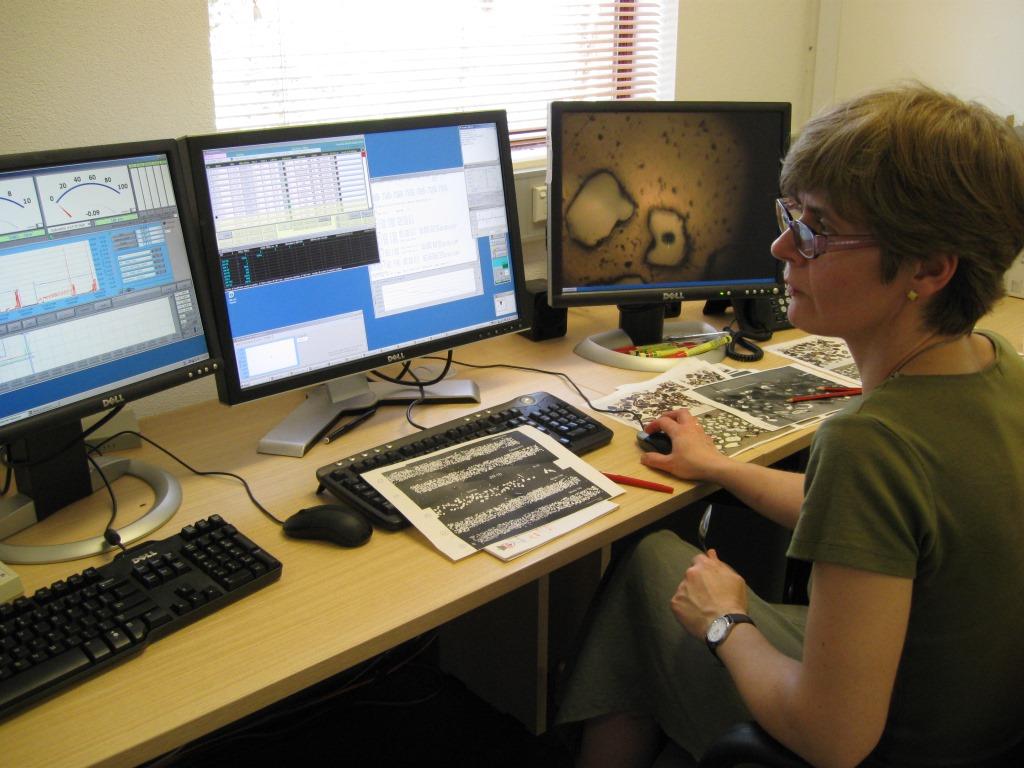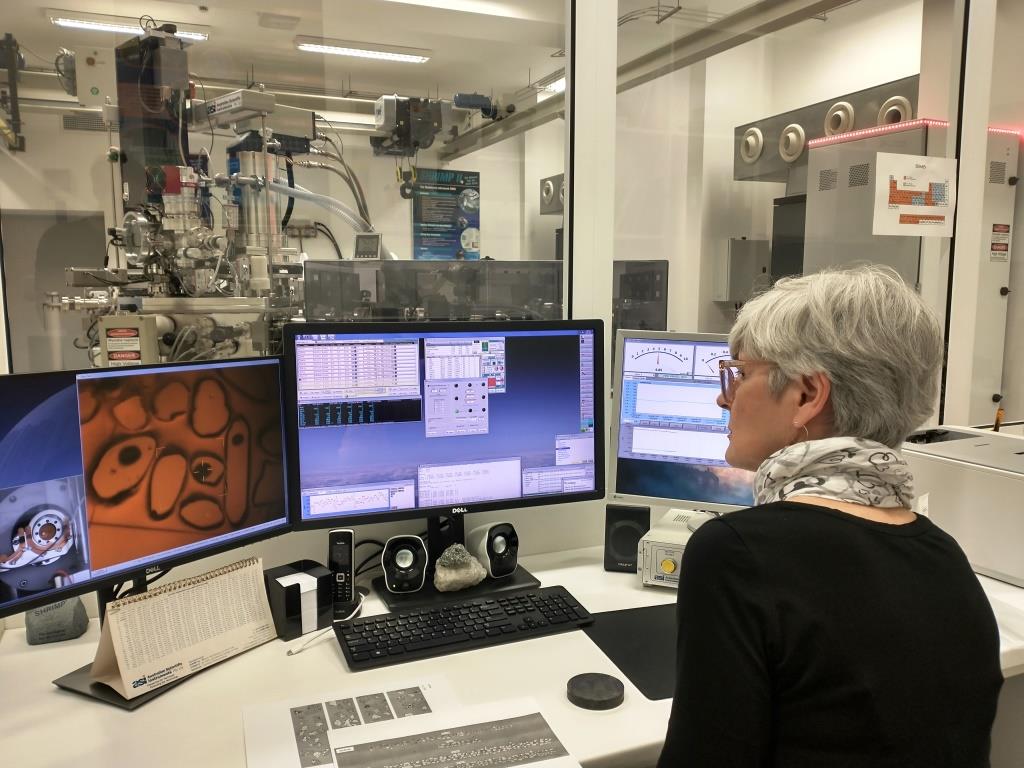 We are pleased to announce that, by Resolution No. 1/IV/2023 of 24 April 2023, the Scientific Council of the Polish Geological Institute-National Research Institute (PGI-NRI) has granted to Ms Ewa Krzemińska, a scientific degree of doctor habilitatus in the field of Exact and Natural Sciences in the discipline of Earth and Environmental Sciences.
We are pleased to announce that, by Resolution No. 1/IV/2023 of 24 April 2023, the Scientific Council of the Polish Geological Institute-National Research Institute (PGI-NRI) has granted to Ms Ewa Krzemińska, a scientific degree of doctor habilitatus in the field of Exact and Natural Sciences in the discipline of Earth and Environmental Sciences.
Ewa Krzemińska graduated from the Faculty of Geology at the University of Warsaw. Her chosen specialities were Petrography and Mineralogy and Geochemistry. She obtained her MSc degree based on the master's thesis entitled 'Contact transformation of rocks in the cover of the Kłodzko-Goldenstock intrusion in the Żelazno-Marcinów-Ołdrzychowice area'. Her doctoral degree in geology was granted to her by the Polish Geological Institute - National Research Institute (PGI-NRI) upon her dissertation entitled 'Geochemical record of changes in proterozoic geotectonic environment based on selected profiles of crystalline rocks of north-eastern Poland'.

Geochronology for the Map of Cratons, analytical session in the SHRIMP laboratory at the Research School of Earth Sciences (RSES), Australian National University (ANU), Canberra, June 2011. Photo: Janina Wiszniewska
The habilitation has been granted by the PGI-NRI Scientific Council following the presentation of a series of seven thematically related publications, including four in Precambrian Research. They formed the dissertation 'Chronology of events on the southern margin of the East European craton: new dates – updates – revisions', discussing the impact of U-Pb isotopic studies and zircon geochronology results on regional correlations and chronostratigraphic reconstructions.

Geochronology for the Detailed Geological Map of the Sudetenland, analytical session at the PGI-NRI SHRIMP laboratory, June 2023. Photo: Dominik Gurba
The research work for the series presented here was carried out between 2011 and 2020 at the Australian University's Research School of Earth Sciences (RSES), the Australian National University (ANU) in Canberra, in the laboratory of the Australian Geological Survey – Geoscienece Australia in Canberra and at the Polish Geological Institute – National Research Institute in Warsaw.
From the very beginning, Ewa Krzemińska's professional career was connected with the Polish Geological Institute, where she gained microanalytical experience in the Department of Petrography as a specialist in the Electron Microscopy Laboratory as an operator of a Jeol JSM 35 microscope with an EDS detector. At the same time, within the framework of statutory projects and later grants (State Committee for Scientific Research in Poland, National Science Centre (NSC)), she conducted research on petrogenetic recognition of crystalline rocks from drill holes from the area of north-eastern Poland, from granulites and lamprophyres to charnockites and metasedimentary rocks.
As part of her research on Precambrian rocks, she also dealt with the geochemical evolution of Late Dacian basalts and tuffs in the Podlasie-Lublin Basin, on the extension of the Volhynian volcanic province.
After obtaining her doctoral degree she was a co-author of a project financed by the National Fund for Environmental Protection and Water Management, during which a new geological map of the crystalline basement of north-eastern Poland in the scale 1:1,000,000 had been prepared. In this project she was responsible for geochronology, including U-Pb isotopic studies using the SHRIMP ion microprobe, their processing and interpretation. The precise identification of the age of magmatic and metamorphic rocks made it possible to narrow down the timeframe of major events on the craton by at least 600 million years, as well as a fairly precise correlation of crustal units of the crystalline basement occurring outside Poland: in Lithuania, Sweden, including the South Baltic area and the Skåne region.
Currently, it is isotopic geochronology and the study of the age of zircons using the U-Pb method that are the main focus of Ewa Krzemińska's interest and scientific activity. Thanks to analytically difficult challenges, rock formations of uncertain or unspecified age are gradually decreasing. Another issue is the study of stable isotopes of light elements, mainly oxygen in zircons as an additional petrogenetic indicator, and also oxygen in bioapatite, for the purposes of palaeoclimatic reconstruction.
Dr hab Ewa Krzemińska participated in the activities of the EUROBRIDGE programme, which over the years carried out a series of interdisciplinary studies of the Proterozoic lithosphere on the area of the Eastern European craton. She has also collaborated with other laboratories equipped with the SHRIMP ion microprobe (Australia, China, Japan, Spain).
She is employed as a Senior Mineralogical-Petrological Laboratory Scientist and is presently the Head of the Micro-area Analysis Laboratory at PGI-NRI.
She is the author or co-author of more than 30 JCR-indexed publications.














 PGI-NRI offer
PGI-NRI offer Mineral resources of Poland
Mineral resources of Poland  Oil and Gas in Poland
Oil and Gas in Poland 




 Subscribe to RSS Feed
Subscribe to RSS Feed